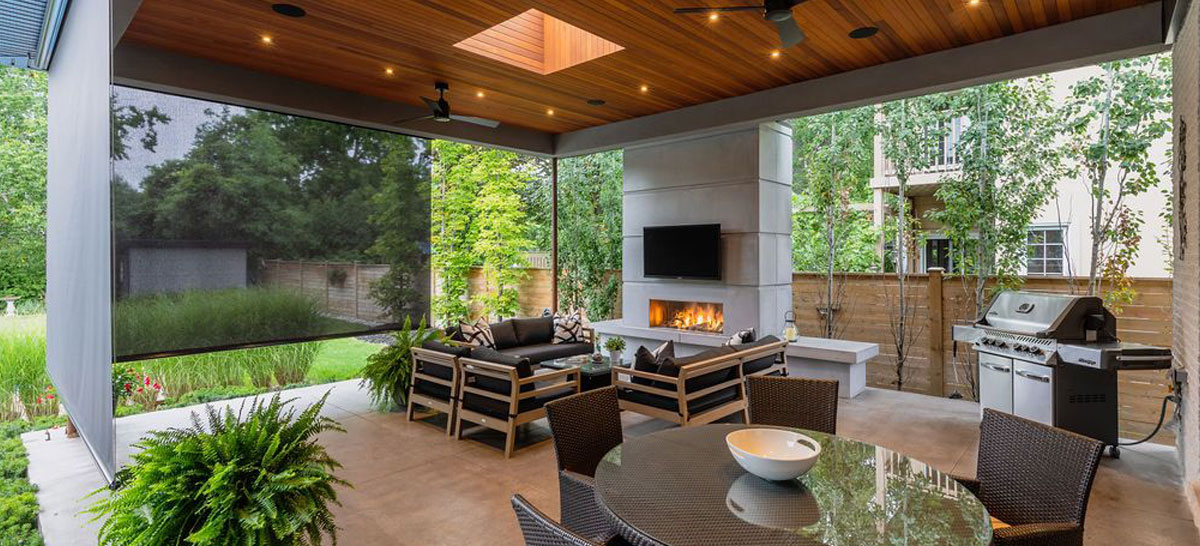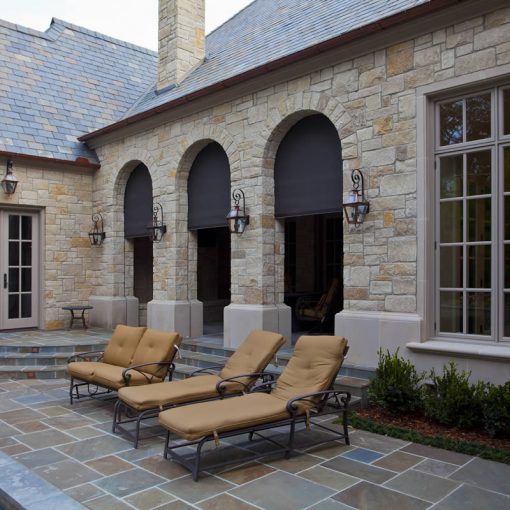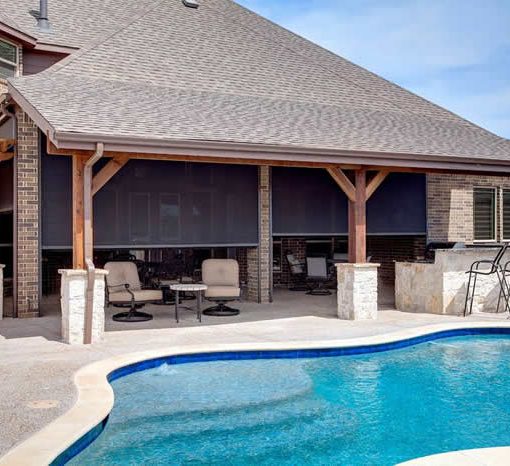
When building or renovating your home, a critical item on your wish list is how to bridge the gap between your outdoor and indoor living spaces. For many people, creating a year-round connection to the outdoors entails increasing the natural light in their homes and making the most of their gardens. This maximizes the interior’s connection to the surroundings, creating a wow factor. So, here are some tips for bringing the outdoors in:
Install Larger Patio Doors
There’s no better way to merge the outdoor and indoor living spaces than installing large patio doors that open to the garden. It makes your garden an extension of the home’s interior, and vice versa. It helps you create a comfy and well-lit family room perfect for winding down after a long day. Installing retractable screens over the patio doors helps maintain privacy and keep out excess sunlight.
Use a Biophilic Design
Biophilic design has grown in popularity in the interior design world. As the name suggests, it relates to the inherent human instinct to interact with the surrounding nature and experience the associated health benefits. Using Biophilic design in your home construction or renovation project improves air quality and circulation.
It entails connecting with nature by incorporating houseplants, living walls, and green roofs into your home design. You may also want to utilize natural materials such as raw plywood for fixtures such as kitchen cupboards. Whenever you step into such spaces, your eyes will be led out towards the adjoining outdoor space. This helps create a seamless interaction between your home’s interior and the outdoors.
Install a Through-View
Consider installing a through-view if you don’t want to install a window or door but still want a connection to the nature outside. It not only brings the outside into your home’s floorplan but also increases light levels. A through-view can connect your rooms to the nature outside besides adding a wow factor to your living spaces.
Use Similar Materials Inside and Outside
If you want to create a seamless transition from your indoor living spaces to the surrounding nature, mirroring flooring or cladding materials both inside and outside is helpful. It creates a seamless transition between the two spaces and a connection to the outdoors.
For instance, laying flagstones on the kitchen floor and the adjacent patio can create symmetry between the two spaces. This will be more pronounced if you install bi-fold doors between the two spaces. The interior and outdoors will feel like one large space whenever the doors get opened.
Incorporate Skylights in Your Home Design
When it comes to creating a connection with nature, you shouldn’t only think laterally. For most people, bringing the outdoors inside is all about installing wider windows or doors. You can go a step further by embracing sky views and light from above. There’s no better way to do so than installing skylights in your home. A stunning skylight provides uninterrupted views of the clouds above and can also be used to divide your living spaces.
Add an “Invisible” Extension to Your Home
Creating a connection to the outdoors isn’t always about bringing the outdoors in. You can also take the indoors out. An easy way to do that is by adding an “invisible” extension to your home for the ultimate outdoor/indoor living. For instance, a glass-roofed walled extension provides you with a cozy, light-filled space where you can spend time all year round.
Summing Up
There’s so much you can do to connect your home with the surrounding nature while ensuring continuation. The aforementioned tips are helpful for anyone who wants to bring more nature into their homes.
Even as you look to create a light-filled haven in your Texas home, you may want to install retractable screens from Universal Screens to guarantee solar and pest protection and privacy. With these screens, you can instantly transform your outdoors into a functional living space and vice versa. Check out our inventory to find what’s best for you.




